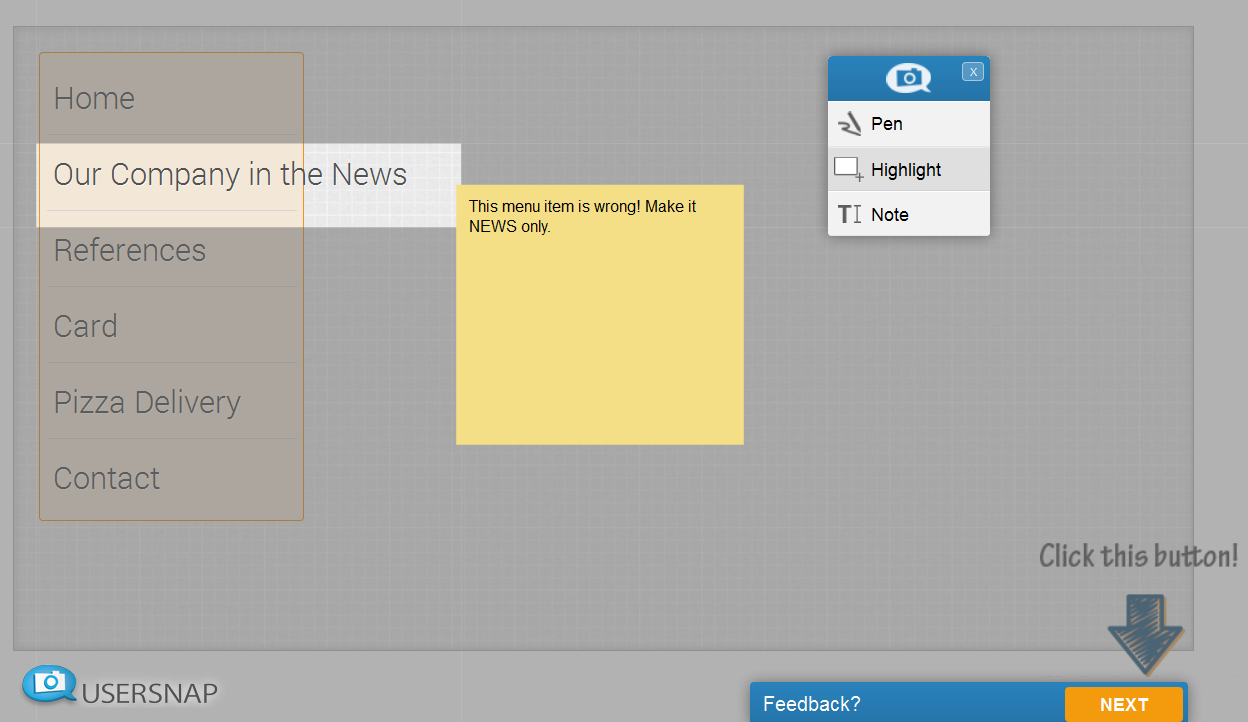Escape the Vicious Cycle of Client Feedback: Take a Picture
No matter if you are working on a design, a web project or any other form of visual result for your clients, you know this situation: you finished the main part of the project, but the feedback about nifty details keeps going on for days, if not weeks. We all know it. But we don’t plan for that in our proposals and we don’t know how to manage that process properly. Let me show you tools and tricks to improve that process and save time and energy that you can spend selling new projects.
We heard it all before yet surprisingly it keeps coming back in projects like nasty boomerangs that slide through the air at high speed: the final phase of many projects is the most challenging one, because it is easy to get to 95 %, the final 5 % are the hardest part.
They are about details, edge cases, special configurations on the end of your customers and if you don’t happen to sit next to them (very unlikely), you will spend a lot of unproductive time on the phone, writing emails or responding to bug reports.
Yet this last phase of the project can actually produce a WOW feeling or completely ruin a project to the point where either you or your client will never work with you again. That is only logical, as the natural process of fixing the details can easily spin out into a vicious cycle of repeat misunderstandings that lead to frustration.
Email is not your favorite bug-tracker
In most cases for convenience (and documentation reasons) clients will choose email as the way to send you bug reports, change requests and remarks. Email has been built for communication, yes, but the unstructured nature of it makes it hard to have a structured, goal-oriented and efficient process to handle those requests. You might want to think about using a common communication infrastructure (if you aren’t already doing it) to centrally track the status of the work and the open issues.
The number of tools and the flavors they come in are legion, and yet we often don’t use them for “small” projects, falsely assuming that in this project the number of issues can’t be that big. Experience shows that the number of interactions is in most cases higher than what you initially thought and the use of such tools for even smaller projects pays off immediately.
Why? Not only because it provides a tool for self-organization and structured communication, it is a valuable way of managing expectations and creating transparency.
Transparency is not optional
Put yourself in your clients’ shoes: they want to get the job done, finish the project as much as you want to, and to get it to work with their clients or peers. That is the reason they need full transparency on the status on your side. Looking into a blackbox feels very bad, if you are looking forward to finally getting your results out.
So get your stuff together, use one of the gazillion project management / bug-tracking tools out there that suits you best, it will end in your benefit even if it creates some overhead in the process.
A screenshot paints a thousand words

What we think is missing in the usual process is visual feedback. That’s the reason we created Usersnap in the first place. Because even when you overcome email as a means of communication by using a bug-tracker or project management tool, there are still endless chains of messages or emails going back and forth trying to nail down the specific issue, that little glitch. It can be a painful experience.
Usersnap was born out of the wish to speed up that process for all parties involved, by offering a simple way of making pixel-perfect screenshots directly from the browser, with no need to download or integrate any tools, offering a way to mark and annotate stuff directly on the web. It is as simple as pushing a button, and the screenshot gets pushed to your inbox or your bug-tracking tool of choice. Integration is easy, usage as well.
The time you spend on finishing the job is the time you lose on the next proposal
Many design or web freelancers tell us the same story when we ask them about their daily business routines: they have projects that are “finished” but keep dragging on for weeks, sometimes months. That not only keeps you busy and often frustrated, but also costs time and money. Improving your feedback loop to be quick and efficient is not only a matter of good practice, but actually helps you improve your business in general, because it frees up time to work for acquiring new business.
So give your business a boost, improve the way you handle client feedback now.
Comments